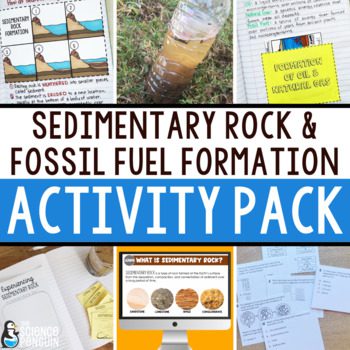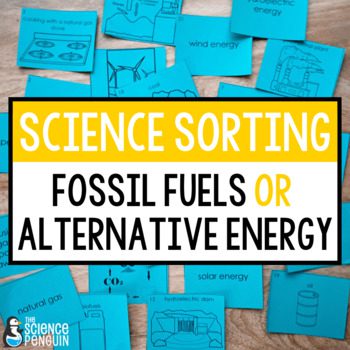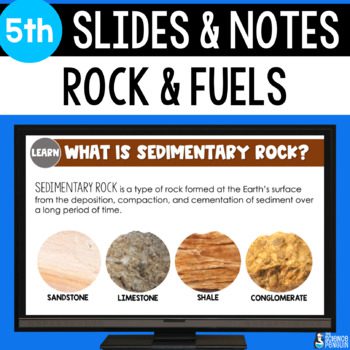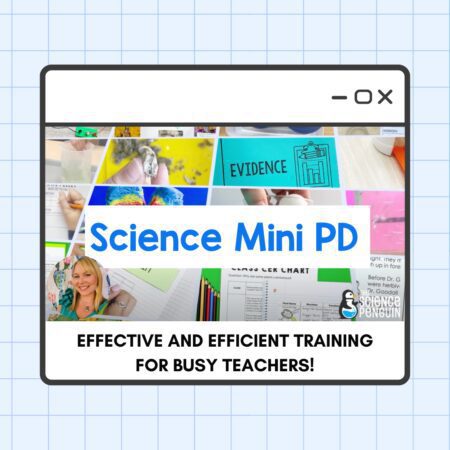
Throughout grade school and college, I never actually learned about fossil fuels. When I saw that was part of the 5th grade curriculum, I knew I had a lot of learning to do. Luckily, fossil fuel formation is actually pretty interesting… and we can make it interesting for kids too!
Coal is a type of rock made from the remains of plants that lived a long time ago. Here’s how it forms:
Plants use sunlight, water, and air to make energy and grow. When they die, their remains add to a pile of plant matter.
The plant matter piles up in a place where it is protected from the weather, like in a swamp or marsh.
Over time, the plant matter is squeezed and heated until it turns to coal.
Oil is a fossil fuel formed from the remains of plants and animals that lived millions of years ago. Here is how it forms:
Plants and animals die and their remains sink to the bottom of the ocean or are buried in the ground.
Over millions of years, the remains are covered by layers of sand, silt, and rock. The heat and pressure from these layers cause the remains to change into oil.
Oil is found in underground reservoirs and can be pumped out and used as an energy source.
Natural gas is formed similarly to oil.
Oil and natural gas are found together in underground reservoirs.
As they are subjected to heat and pressure over a long time, they both change and become more dense.
Natural gas is lighter than oil, so it rises to the top of the reservoir.
Here are some activities and resources for teaching 4th, 5th, and 6th grade students about coal, oil, and natural gas formation.
1.  Read Aloud
Read Aloud
Looking for trade books to teach the basics of coal, oil, and natural gas formation? Here are 3 books to keep on hand (affiliate links). You can also find some of these on Epic.
2.  Flipbook
Flipbook
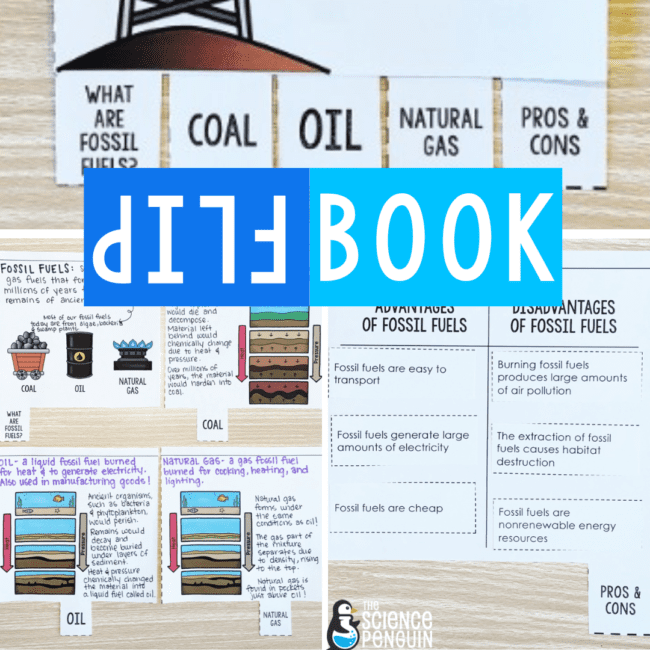
Students need to see and understand diagrams. Use visuals that show the processes that change organic matter into fossil fuels. Differentiate between coal, oil, and natural gas.
This flipbook allows students to identify fossil fuels, work with diagrams, and determine advantages and disadvantages of using fossil fuels all in one handy flip book!
See it on TpT: Coal, Oil, and Natural Gas Flipbook
3.  Fossil Fuel Sandwich Model
Fossil Fuel Sandwich Model
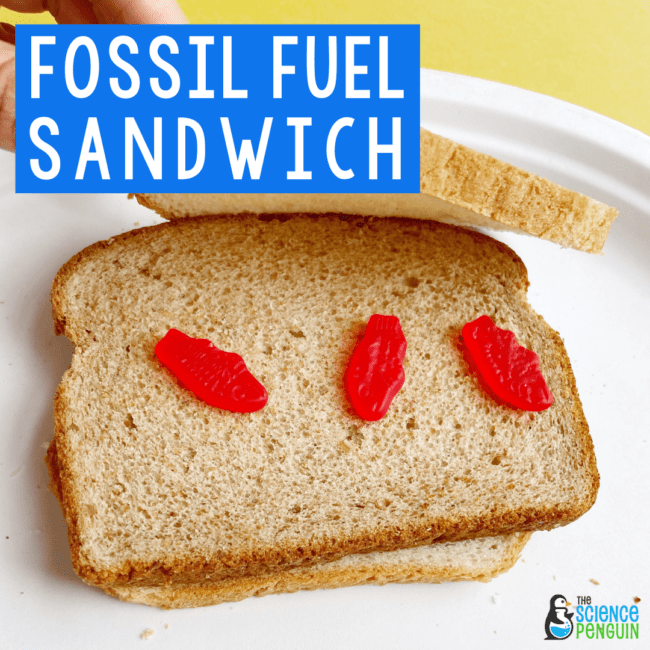
Sandwich science… why not? Make a model of fossil fuel formation using simple materials:
- paper plate
- 3 pieces of bread (different types if possible)
- Swedish fish gummies
- heavy book
- paper towel
- Put one slice of bread on the plate. This represents the sand on the ocean floor.
- Put the gummy fish on top of the bread. These represent dead sea plants and animals.
- Put the second slice of bread on top of the gummy fish.
- Add several more gummy fish on the second slice of bread.
- Place the last slice of bread on top.
- Put a paper towel on top of your “fossil fuel sandwich” and place a heavy book on top. The heavy book represents the pressure.
- OPTION: Have students draw the model and label what each part represents.
- If possible, leave the sandwiches in place for 2 or 3 days to signify the passage of millions of years.
- After 1-3 days, make observations.
- Gently try to pull the top layer of bread off. Can you separate the layers easily?
- Observe. What do the fish look like? What does the bread look like?
- Discuss: What does each part represent? What are the benefits of this model? What are the limitations?
4. 💻 Digital Inquiry
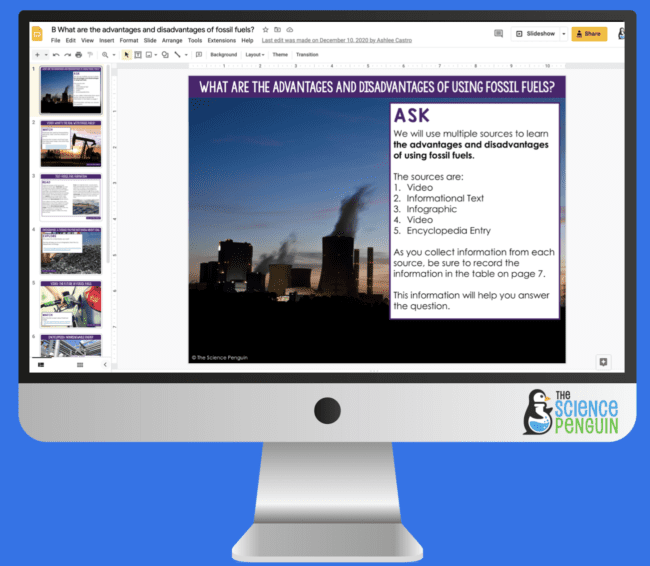
What are the advantages and disadvantages of using fossil fuels?
In this activity, students work independently to collect information from multiple sources, write important notes from the sources that answer the question, and construct a response that includes evidence from their notes.
See it on TpT: Fossil Fuels Digital Inquiry
5. ❓Task Cards
Designed as a simple tool to increase student retention of important vocabulary, these versatile task cards are perfect for review! This set includes 20 task cards, recording sheets, and an answer key.
The questions ask students to select images that best represent terms, recall definitions and examples, compare and contrast terms, and work with visual stimuli like simple diagrams and tables.
See it on TpT: Fossil Fuels Vocabulary Task Cards
Sign up for the Free Resource Library
This is an exclusive library of 40+ science printables, labs, activities, and games for grades 3-6. Sign up and check your email for immediate access.

 Read Aloud
Read Aloud Flipbook
Flipbook Fossil Fuel Sandwich Model
Fossil Fuel Sandwich Model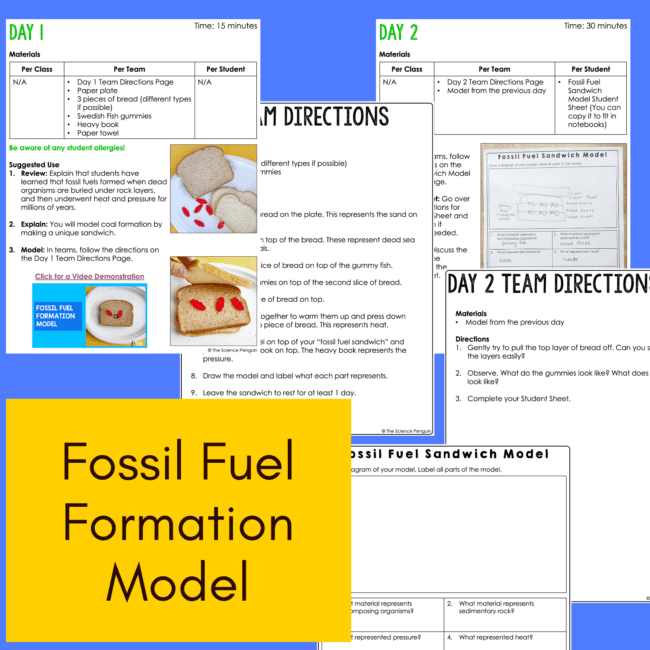
 Top Teaching Resources
Top Teaching Resources